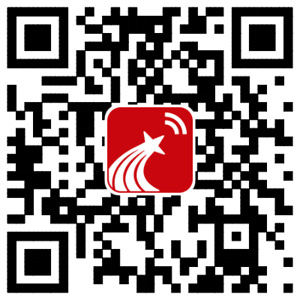限定内容
主题
- 35,060 篇 细胞因子
- 24,278 篇 单克隆抗体
- 17,568 篇 淋巴细胞
- 16,513 篇 抗原
- 13,769 篇 免疫球蛋白
- 10,279 篇 hla
- 10,256 篇 il-6
- 10,216 篇 t淋巴细胞
- 8,311 篇 细胞免疫
- 7,708 篇 inflammation
- 7,697 篇 tnf
- 7,450 篇 肿瘤坏死因子-α
- 7,438 篇 tnf-α
- 6,978 篇 cytokines
- 6,166 篇 儿童
- 5,804 篇 人类
- 5,357 篇 mhc
- 5,176 篇 肿瘤坏死因子
- 5,165 篇 抗体
- 4,944 篇 预后
机构
- 2,672 篇 第四军医大学
- 2,628 篇 中国医科大学
- 2,524 篇 吉林大学
- 2,222 篇 华中科技大学
- 1,988 篇 安徽医科大学
- 1,938 篇 河北医科大学
- 1,919 篇 苏州大学
- 1,871 篇 山西医科大学
- 1,775 篇 重庆医科大学
- 1,758 篇 山东大学
- 1,684 篇 第三军医大学
- 1,620 篇 浙江大学
- 1,498 篇 中山大学
- 1,494 篇 南方医科大学
- 1,446 篇 复旦大学
- 1,421 篇 第二军医大学
- 1,376 篇 天津医科大学
- 1,363 篇 郑州大学
- 1,350 篇 解放军总医院
- 1,298 篇 扬州大学
文献订阅
- Low-intensity pulsed ultrasound stimulation to treat renal fibrosis through inhibiting tubular IL-1R
- Nanjing Med Univ Jiangsu Prov Hosp Dept Nephrol 300 Guangzhou Rd Nanjing 210029 Peoples R ChinaNanjing Med Univ Affiliated Hosp 1 300 Guangzhou Rd Nanjing 210029 Peoples R ChinaNanjing Med Univ Jiangsu Prov Hosp Dept Cardiol 300 Guangzhou Rd Nanjing 210029 Peoples R ChinaDuke Univ Med Ctr Dept Med Div Nephrol Durham NC USANanjing Med Univ Collaborat Innovat Ctr Cardiovasc Dis Translat Med Nanjing Peoples R China
- 来源 PubMed期刊 ScienceCitationIndex... 详细信息
- HLA-B*15:01-positive severe COVID-19 patients lack CD8+ T cell pools with highly expanded public clonotypes
- Univ Melbourne Peter Doherty Inst Infect & Immun Dept Microbiol & Immunol Melbourne Vic 3000 AustraliaHong Kong Univ Sci & Technol Sch Engn Dept Elect & Comp Engn Hong Kong Hong Kong Peoples R ChinaUniv Melbourne Dept Elect & Elect Engn Melbourne Vic 3010 AustraliaMonash Univ Infect & Immun Program Clayton Vic 3800 AustraliaMonash Univ Biomed Discovery Inst Dept Biochem & Mol Biol Clayton Vic 3800 AustraliaUniv Hong Kong Sch Publ Hlth HKU Pasteur Res Pole Hong Kong Hong Kong Peoples R ChinaUniv Hong Kong Sch Publ Hlth Div Publ Hlth Lab Sci Hong Kong Hong Kong Peoples R ChinaChinese Univ Hong Kong Prince Wales Hosp Dept Med & Therapeut Hong Kong Hong Kong Peoples R ChinaChinese Univ Hong Kong Li Ka Shing Inst Hlth Sci Fac Med Hong Kong Hong Kong Peoples R ChinaQueen Mary Hosp Dept Pathol Div Transplantat & Immunogenet Hong Kong Hong Kong Peoples R ChinaHong Kong Jockey Club Global Hlth Inst Hong Kong Hong Kong Peoples R ChinaUniv Hong Kong WHO Collaborating Ctr Infect Dis Epidemiol & Contr Li Ka Shing Fac Med Sch Publ Hlth Hong Kong Hong Kong Peoples R ChinaLab Data Discovery Hlth Hong Kong Sci Pk Hong Kong Hong Kong Peoples R ChinaUniv Hong Kong Shenzhen Hosp Shenzhen 518009 Peoples R ChinaMenzies Sch Hlth Res Darwin NT 0810 AustraliaChildrens Hosp Los Angeles Div Infect Dis Los Angeles CA 90027 USAUniv Calif Los Angeles Keck Sch Med Dept Pediat Mol Microbiol & Immunol Los Angeles CA 90033 USASt Jude Childrens Res Hosp Dept Immunol Memphis TN 38105 USAMurdoch Childrens Res Inst Infect & Immun Melbourne Vic 3052 AustraliaUniv Melbourne Dept Paediat Melbourne Vic 3010 AustraliaRoyal Childrens Hosp Melbourne Dept Gen Med Melbourne Vic 3052 AustraliaRoyal Childrens Hosp Melbourne Immunisat Serv Melbourne Vic 3052 AustraliaUniv Melbourne Dept Obstet Gynaecol & Newborn Hlth Melbourne Vic 3010 AustraliaUniv Melbourne Peter Doherty Inst Infect & Immun Dept Infect Dis Melbourne Vic 3000 AustraliaRo
- 来源 ScienceCitationIndex... PubMed期刊 详细信息
- Integrative RNA-seq and CLIP-seq analysis reveals hnRNP-F regulation of TNFα/NFκB signaling in high-glucose conditions
- Hubei Univ Chinese Med Wuhan Peoples R ChinaHubei Prov Hosp Tradit Chinese Med Wuhan Peoples R ChinaHubei Univ Chinese Med Hubei Key Lab Theory & Applicat Res Liver & Kidney Affiliated Hosp Wuhan Peoples R ChinaHubei Shizhen Lab Wuhan Peoples R China
- 来源 ScienceCitationIndex... PubMed期刊 详细信息
- Targeting CIRP and IL-6R-mediated microglial inflammation to improve outcomes in intracerebral hemorrhage
- Department of Neurophysiology and Neuropharmacology Institute of Special Environmental Medicine and Co-innovation Center of Neuroregeneration Nantong University 9 Seyuan Road Nantong Jiangsu 226019 ChinaBeijing Institute of Brain Disorders No. 10 Xitoutiao Beijing 100069 ChinaDepartment of Neurosurgery Zhengzhou University People’s Hospital (Henan Provincial People’s Hospital) 7 Weiwu Road Zhengzhou Henan 450000 ChinaDepartment of Emergency Affiliated Hospital of Nantong University Nantong 226001 ChinaDepartment of Neurology Affiliated Hospital of Nantong University Nantong 226001 ChinaDepartment of Neurology Xuanwu Hospital Capital Medical University 45 Changchun Street Beijing 100053 China
- 来源 PubMed期刊 详细信息

